MODU launches initiatives to design for better futures. We work
as creative entrepreneurs, engaging proactively with issues important to us with new ventures.
Second Life transforms
overlooked assets—empty or vacant spaces—in urban neighborhoods, revitalizing
these properties into dynamic spaces for local businesses and sites of learning.
Our cities are home to countless properties that escape market demand for
retrofit, yet offer vast open spaces for flexible use. Unlike traditional retrofits, Second Life focuses on the creation of “mini-buildings”:
free-standing, modular
structures that celebrate our human nature to be social while allowing for physical
distancing when necessary.
The mini-buildings utilize prefabricated components to
optimize onsite assembly, significantly reducing the time and costs associated
with building renovations. They
are climatized independently and can be used “off the grid,” enabling them to
adapt to both changing climates and health recommendations. During extreme
weather conditions or physical distancing periods, these mini-buildings act as
hubs of activity independent from each other. In
temperate weather or periods of physical proximity, they serve as “seeds” that
support connectivity and more expansive activity.
Second Life: Line and Mat / New York
MODU
Urban Revitalization
2019 - Ongoing
To date, the Second Life initiative has developed two
mini-building types, the Line and the Mat, each of which is
suited to an existing building type and size. The interim program for each of the
mini-buildings is identified based on the needs of the community and is designed
to transition into long-term occupancy after an initial 3- to 5-year revitalization
period. The mini-buildings are lightweight and readily disassembled if no
longer needed.
Awards:
Honorable Mention, 2020 Fast Company World Changing Ideas Award (Spaces, Places, Cities)
Winner, 2019 Emerging Voices Award
MODU
Urban Revitalization
2019 - Ongoing
To date, the Second Life initiative has developed two mini-building types, the Line and the Mat, each of which is suited to an existing building type and size. The interim program for each of the mini-buildings is identified based on the needs of the community and is designed to transition into long-term occupancy after an initial 3- to 5-year revitalization period. The mini-buildings are lightweight and readily disassembled if no longer needed.
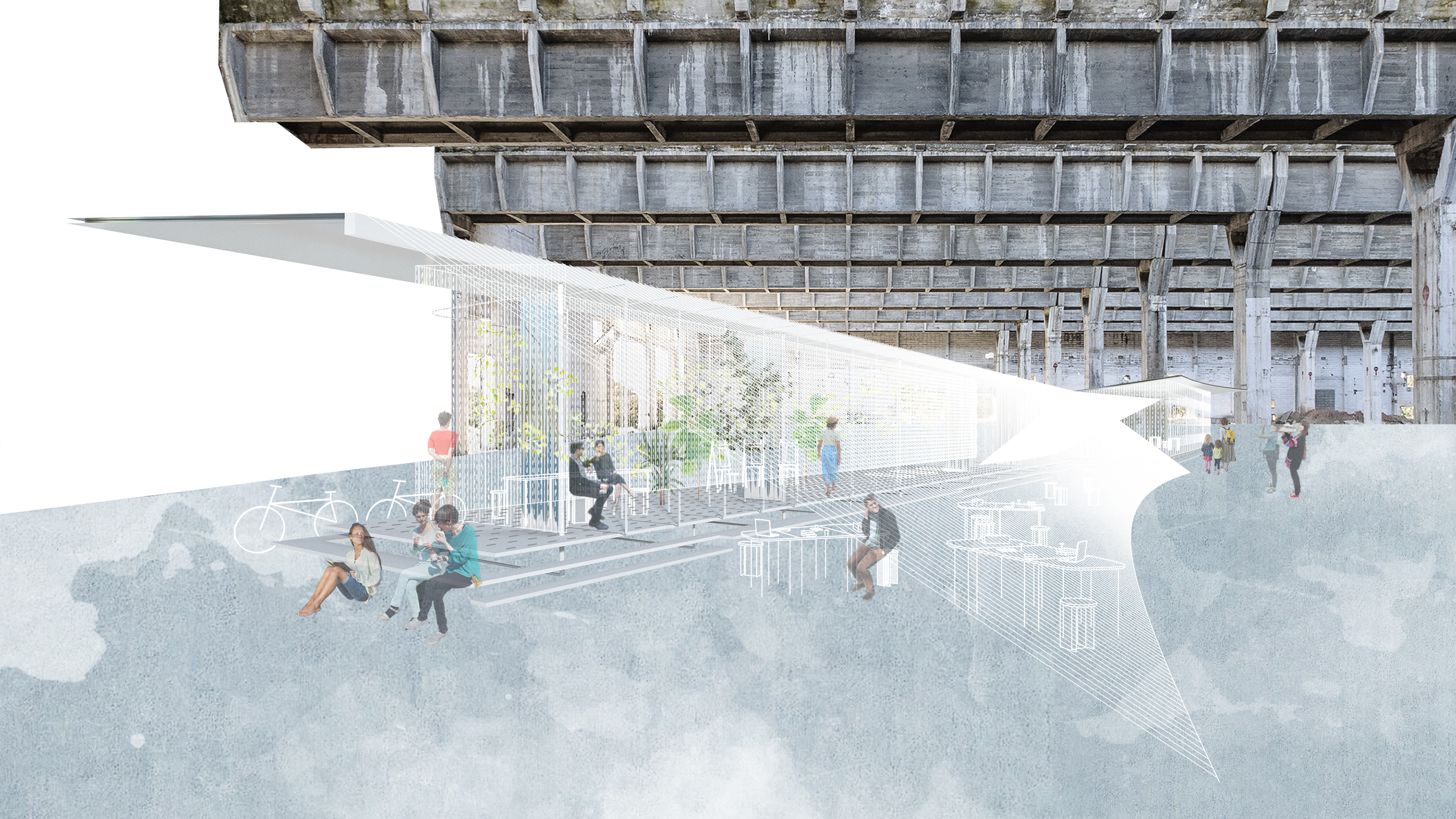
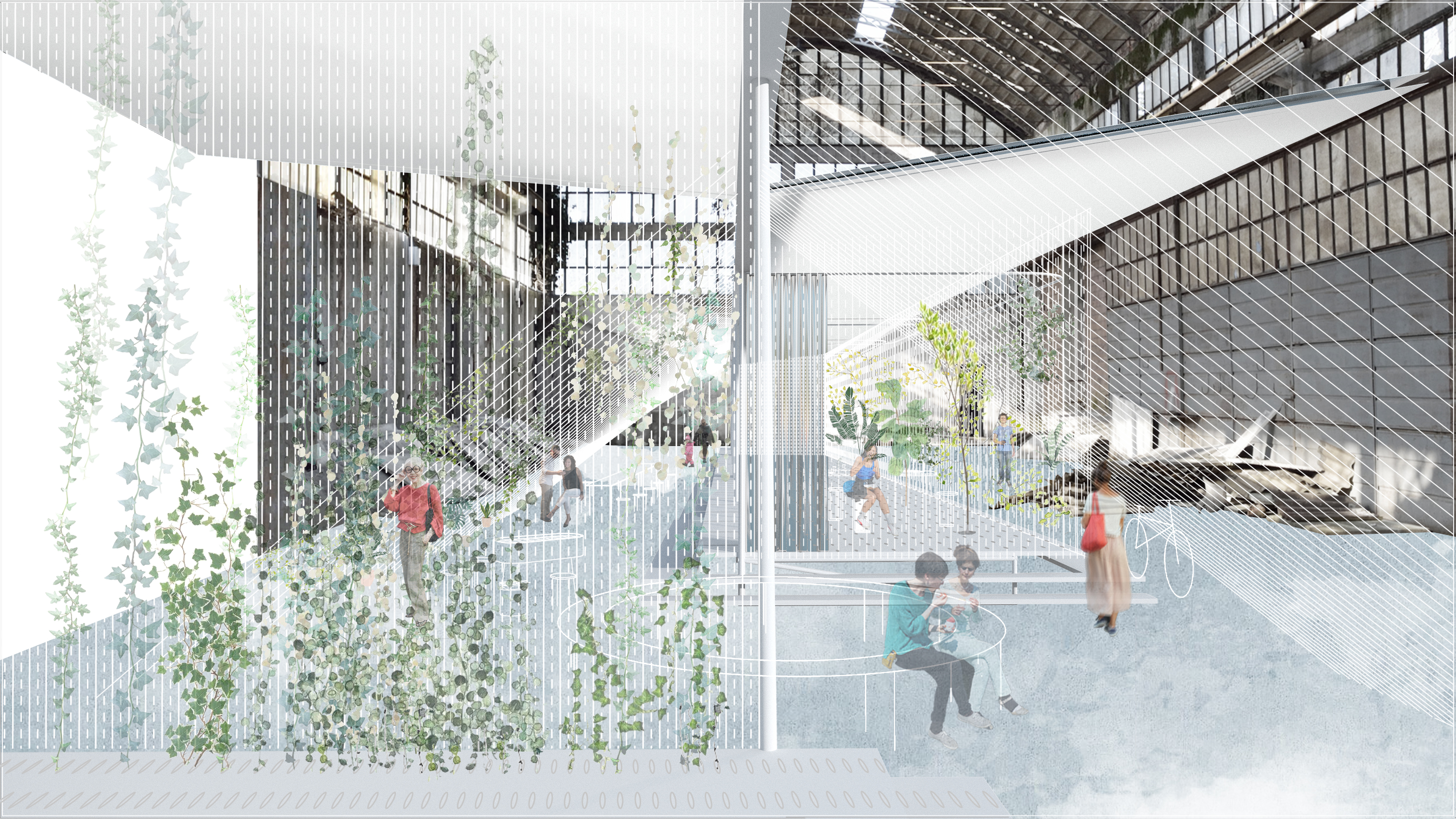
Line Mini-building
The Line is
a freestanding mini-building that was developed for the Second Life initiative.
It creates work and learning rooms within vast, vacant, or empty spaces—such as
formerly industrial buildings or empty retail storefronts—without requiring
extensive renovations while meeting Healthy Building standards.
Unlike typical interim solutions—such as storage containers,
which compartmentalize space without adaptability—the Line can either connect to or separate from surrounding
areas of the vacant building. It is a modular structure that supports transparent
panels, which can be fully open or closed. Raised off the floor, the platform
is passively cooled in warm months and independently climatized with radiant heating
and thermal curtains in cold months. Surrounding mesh supports the growth of
climbing plants, which create personal green spaces: providing connection to nature
for our well-being.
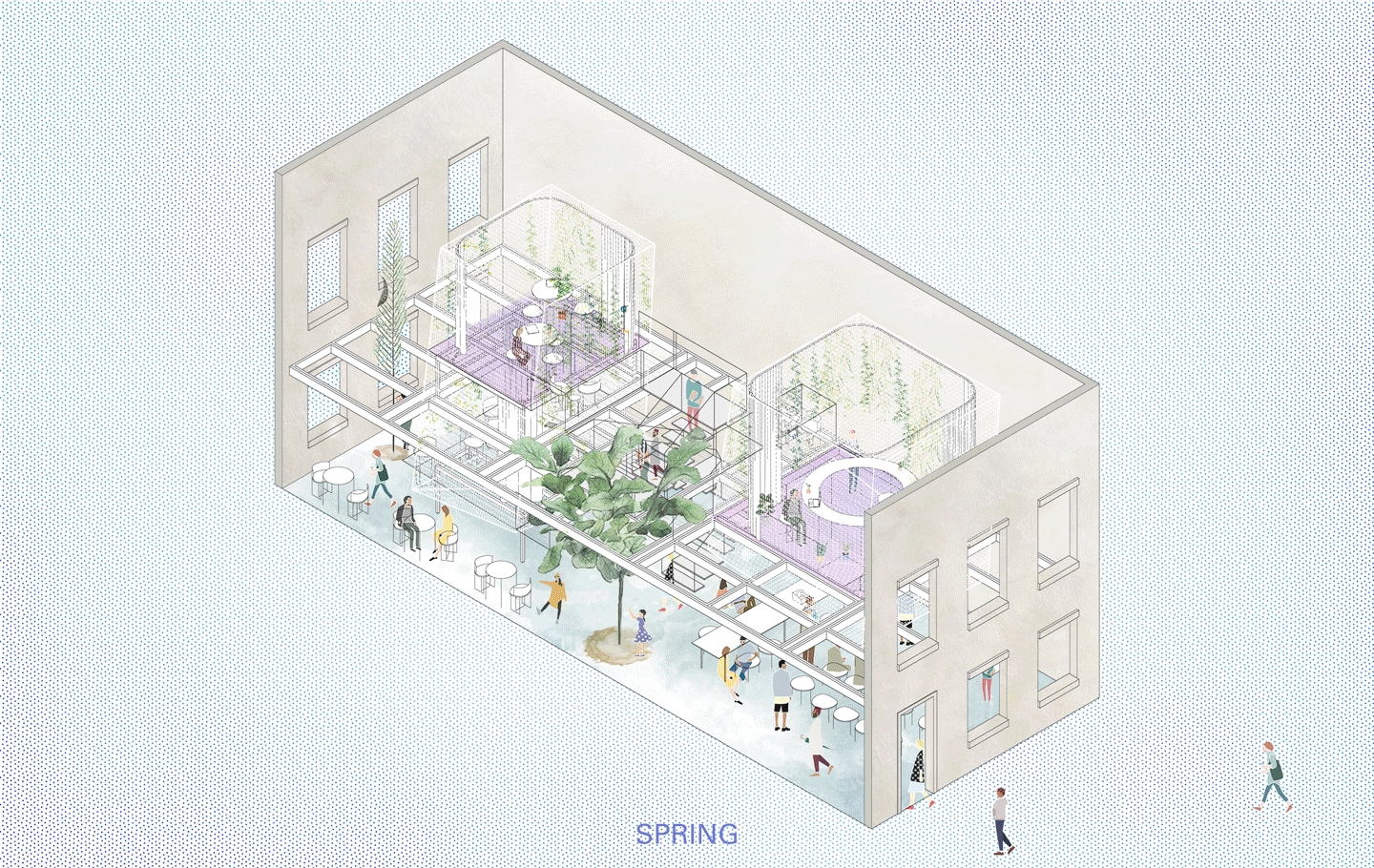

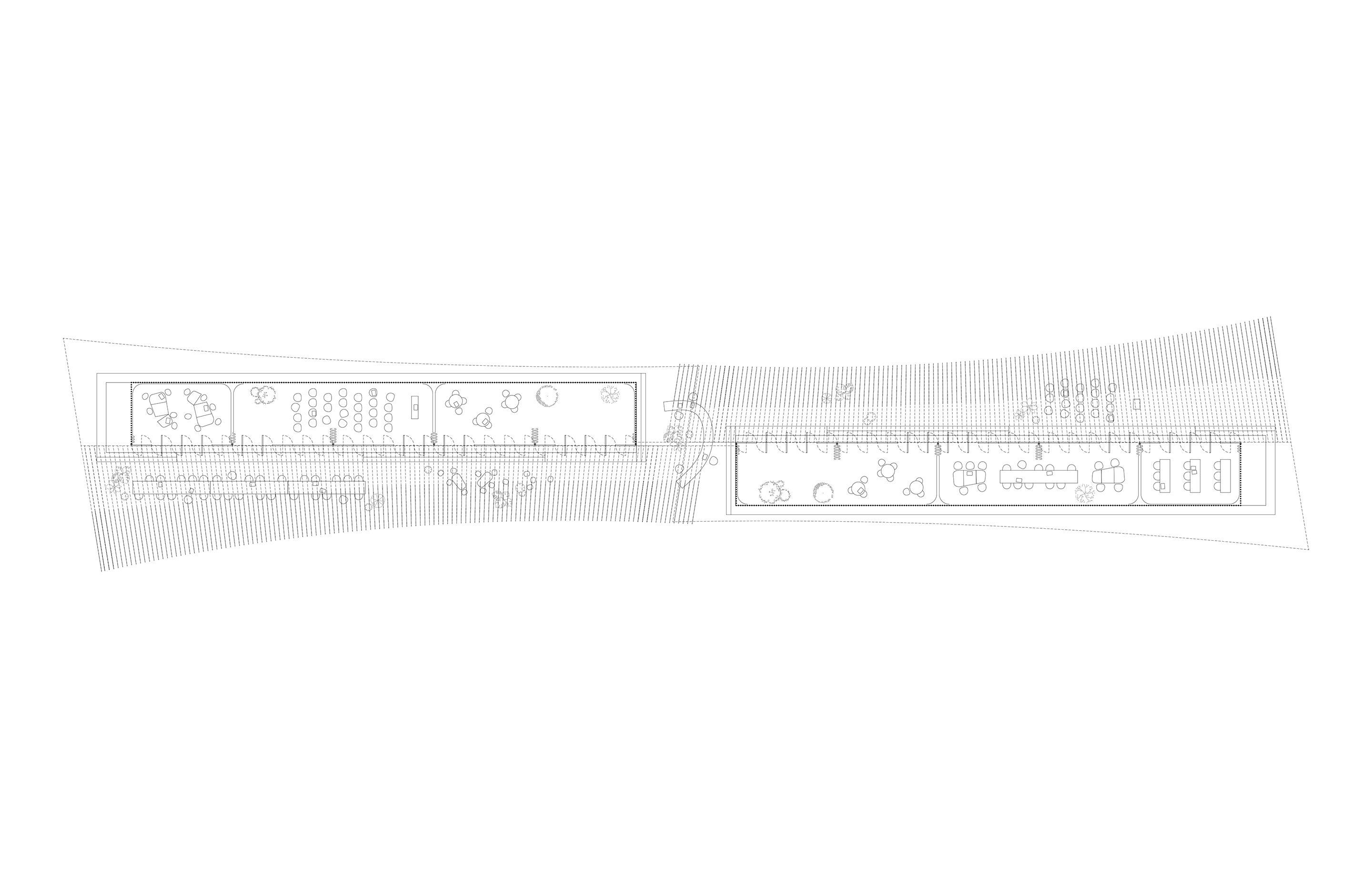


The Mat is an approach to vacant homes and developed as
part of the Second Life initiative. It allows users to convert formerly
residential—and thus smaller—buildings with inadequate structural integrity
into dynamic spaces for local businesses or community use. This approach
defines building elements that are permanent and those that are designed for
interim use.
The open floor framing system consists of modular wood
components that streamline the construction process, minimize costs, and reduce
the need for skilled labor. This open framework stabilizes the existing structure
while supporting rooms for small groups, if necessary, even to separate
themselves. The rooms are enclosed in visually permeable panels that are
operable and are semi-climatized with radiant heating and thermal curtains. Once
permanent occupancy has been established, these rooms can be uninstalled while leaving
the floor framing structure intact.
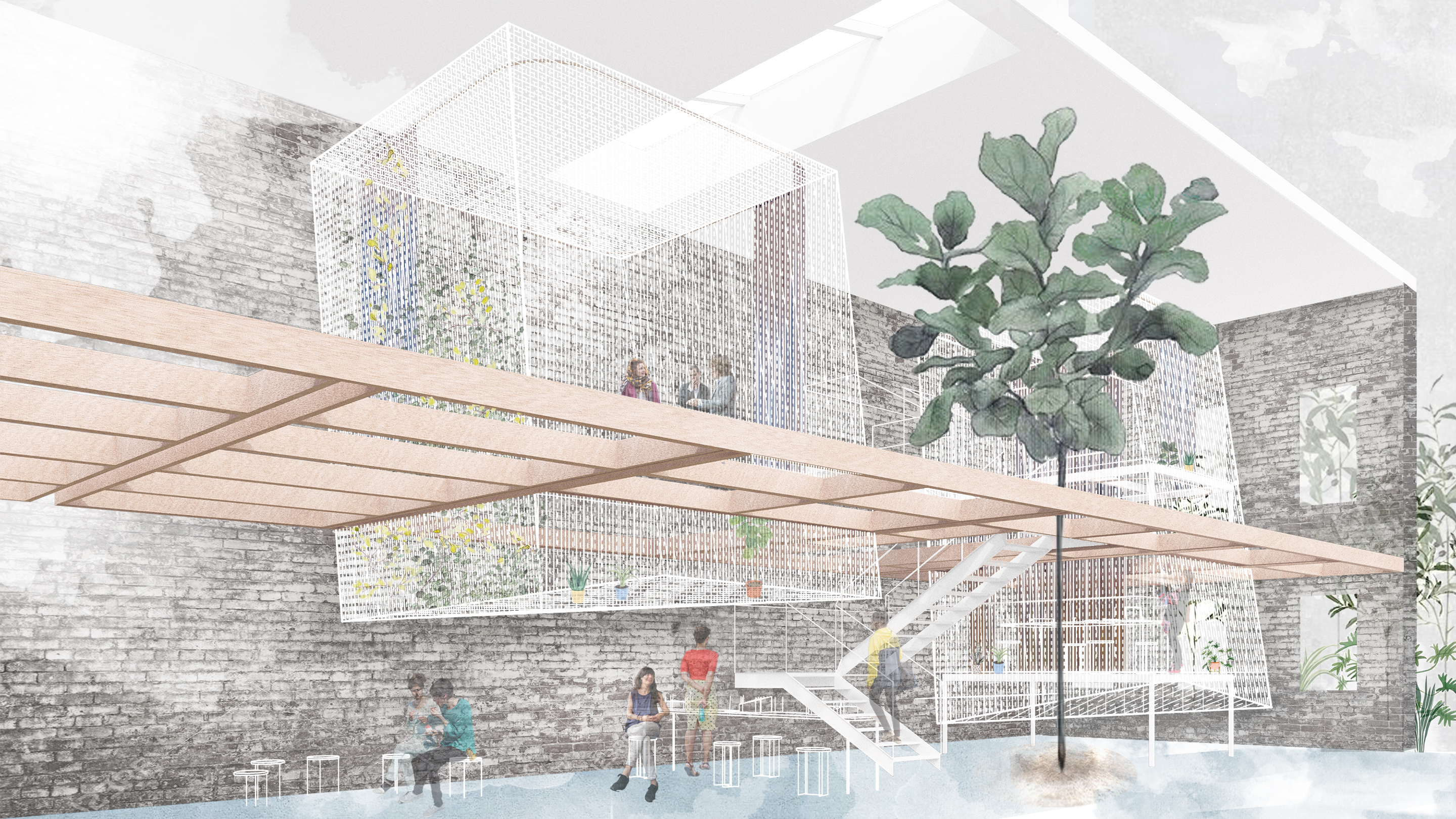

Mat Mini-building
Project Team: Phu Hoang, Rachely Rotem, Jiri Vala, Tom Sterling, Zhenwei Zhong, Shu Du
